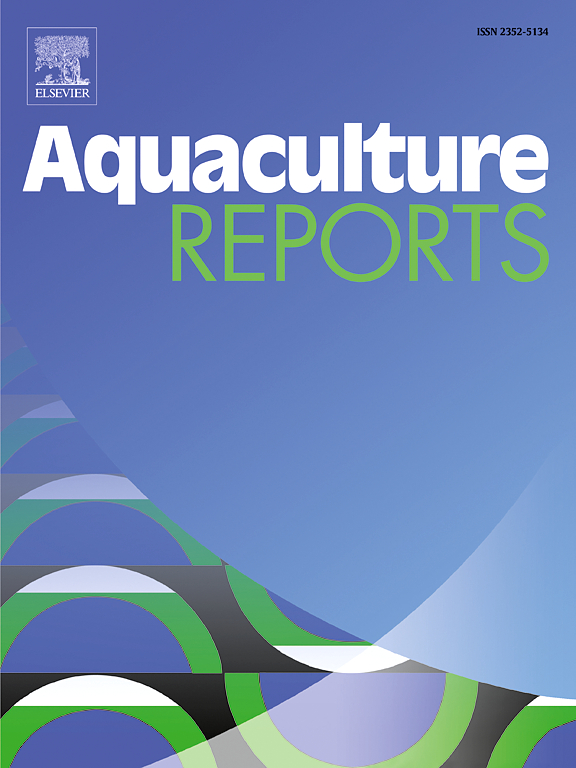Peptide P2 targeting Vibrio parahaemolyticus PirB toxins blocks the cytotoxic effects to shrimp Litopenaeus vannamei
IF 3.2
2区 农林科学
Q1 FISHERIES
引用次数: 0
Abstract
PirB is the main virulence factor of acute hepatopancreatic necrosis disease (AHPND) which induced the sloughing of hepatopancreatic cells and shrimp death. In addition, Litopenaeus vannamei aminopeptidase N (Lv-APN) is reported to be a functional receptor that mediates the pathogenicity by VpAHPND. This study aims to screen the PirB binding peptide to rescue the survival rate under VpAHPND infection. Here, the PirB toxin-binding peptides were selected using the random phage peptide library kit, and their biological function was verified by injecting them under VpAHPND challenge. The receptor candidates for PirB were genome-wide identified and selected based on gene expression profiles, and the biological function of Lv-APN1 was confirmed through RNAi. Docking analysis of Peptide-Lv-APN1 and PirB-Lv-APN1 was conducted using the MDockPeP server, with comparative analysis implied. As a result, a total of 11 PirB binding peptides were screened, among which P2 was found to effectively improve the shrimp survival rate under VpAHPND challenge. And knocked down of Lv-APN1, candidate receptor for PirB toxin, rescued mortality under VpAHPND challenge. Furthermore, docking analysis revealed that the interface of Lv-APN1 to rPirB was consistent with the P2 to rPirB, suggesting that P2 is likely to bind to PirB to block its binding to Lv-APN1 to reduce the mortality. In conclusion, both the injection of P2 and inference of Lv-APN1 can rescue the mortality of shrimp under VpAHPND challenge, and docking analysis revealed P2 is likely to bind to rPirB, blocking its binding to Lv-APN1 and reducing VpAHPND infection.
求助全文
约1分钟内获得全文
求助全文
来源期刊

Aquaculture Reports
Agricultural and Biological Sciences-Animal Science and Zoology
CiteScore
5.90
自引率
8.10%
发文量
469
审稿时长
77 days
期刊介绍:
Aquaculture Reports will publish original research papers and reviews documenting outstanding science with a regional context and focus, answering the need for high quality information on novel species, systems and regions in emerging areas of aquaculture research and development, such as integrated multi-trophic aquaculture, urban aquaculture, ornamental, unfed aquaculture, offshore aquaculture and others. Papers having industry research as priority and encompassing product development research or current industry practice are encouraged.
 求助内容:
求助内容: 应助结果提醒方式:
应助结果提醒方式:


